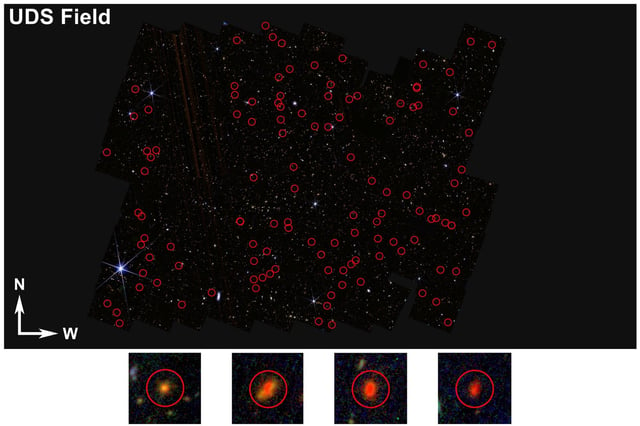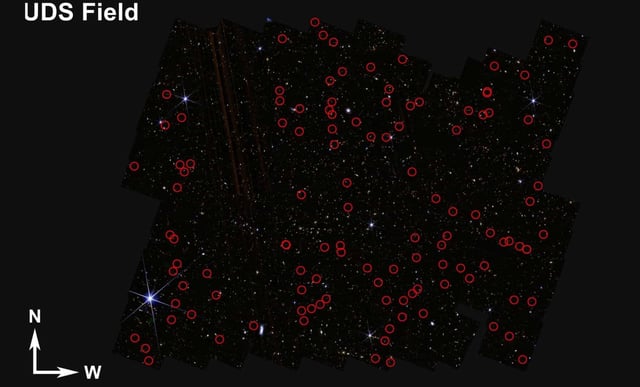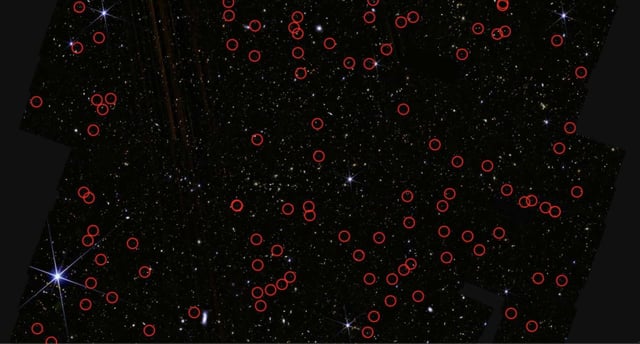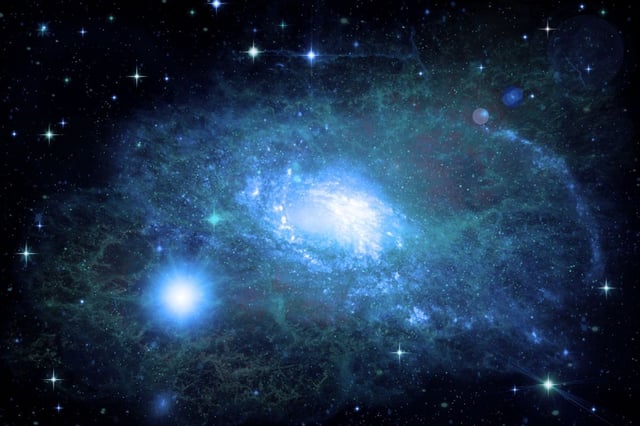Overview
- Researchers at the University of Missouri applied the dropout technique to JWST NIRCam imaging and selected 300 exceptionally bright candidate galaxies from the first billion years.
- Detailed analysis of 137 objects with JWST’s mid-infrared data shows about 67% are likely lower-redshift dusty galaxies rather than genuine early galaxies.
- Roughly 7% of the mid-infrared subset retain spectral energy distributions consistent with true high-redshift galaxies, and 25% remain inconclusive.
- Only one object in the entire sample has been confirmed as a high-redshift galaxy through spectroscopic measurements.
- The authors emphasize that further spectroscopy—using JWST’s NIRSpec or ground-based instruments—is essential to validate the remaining candidates and determine any need for revisions to galaxy-formation models.



